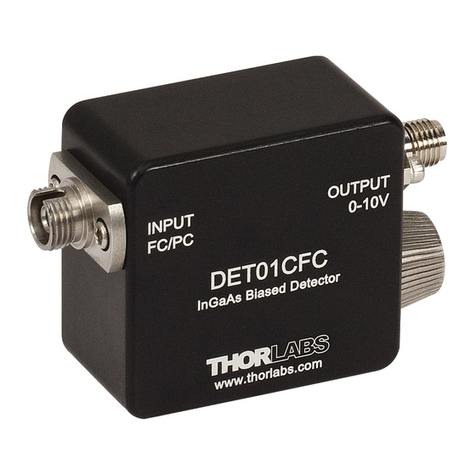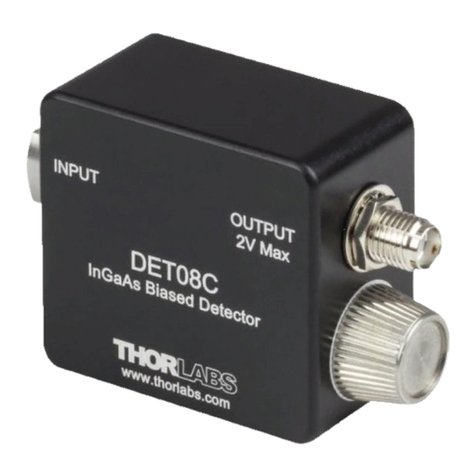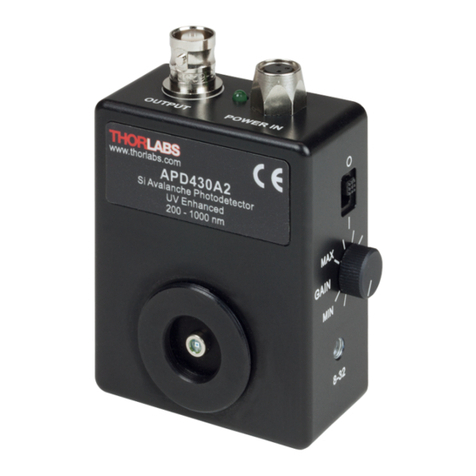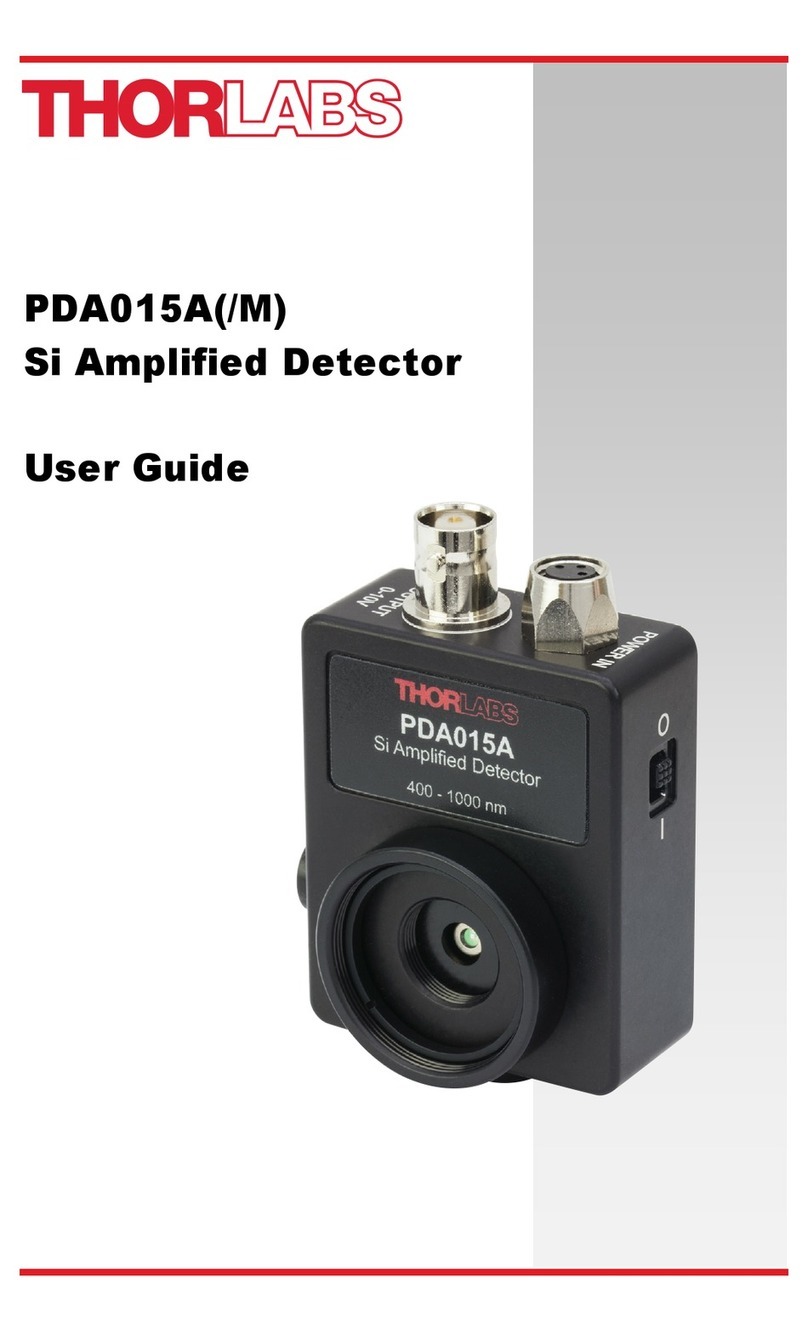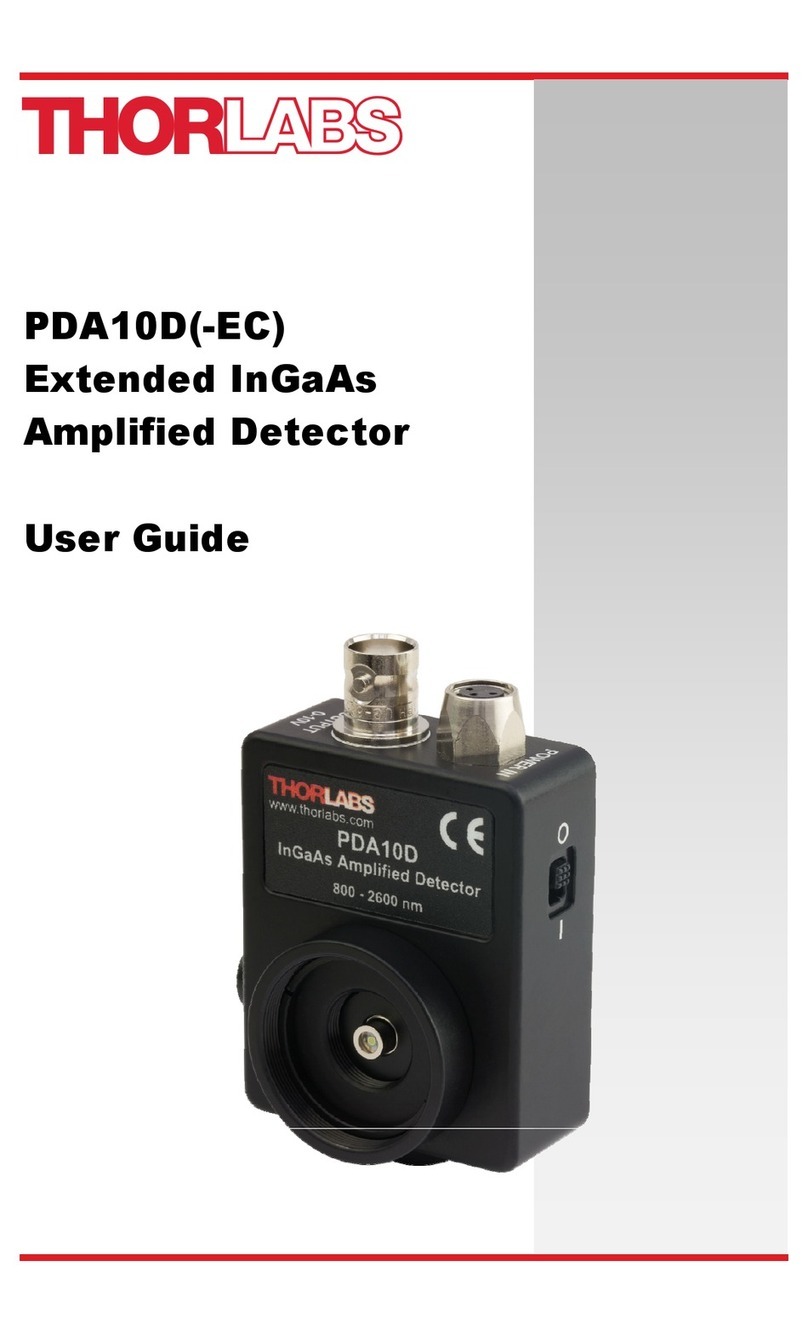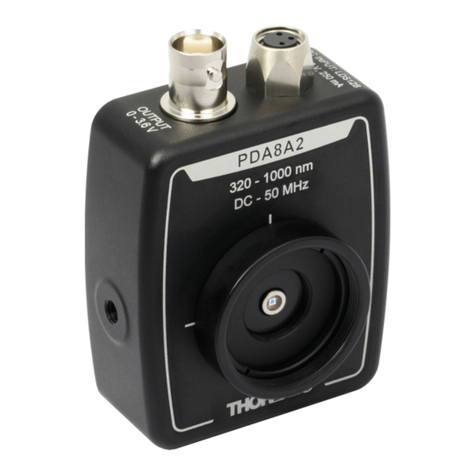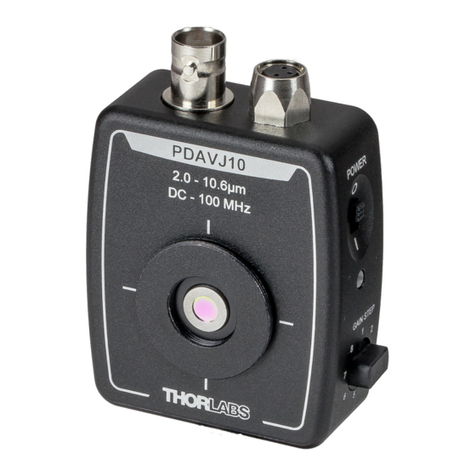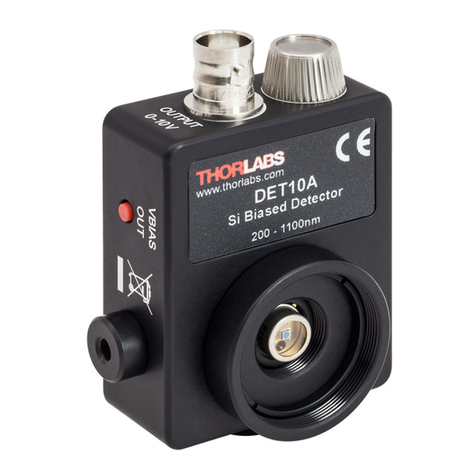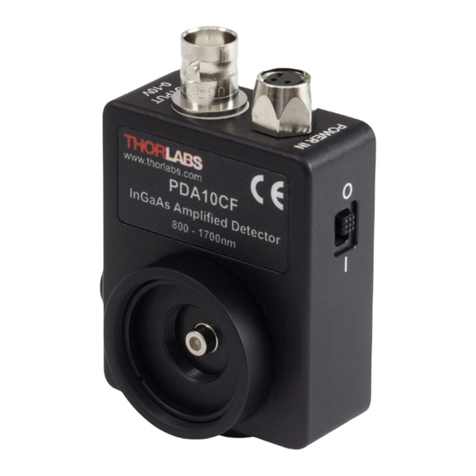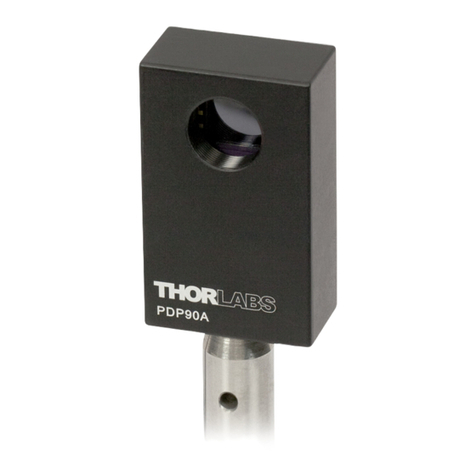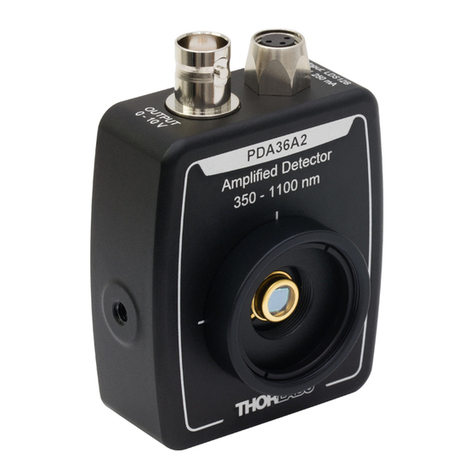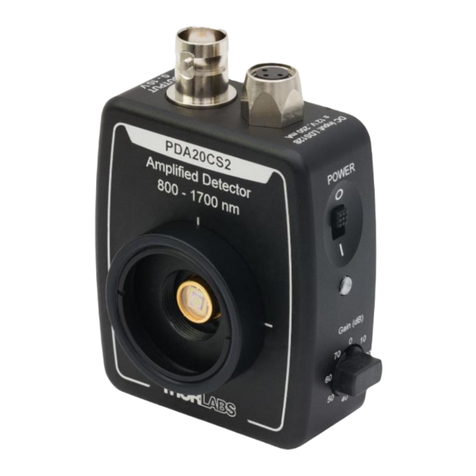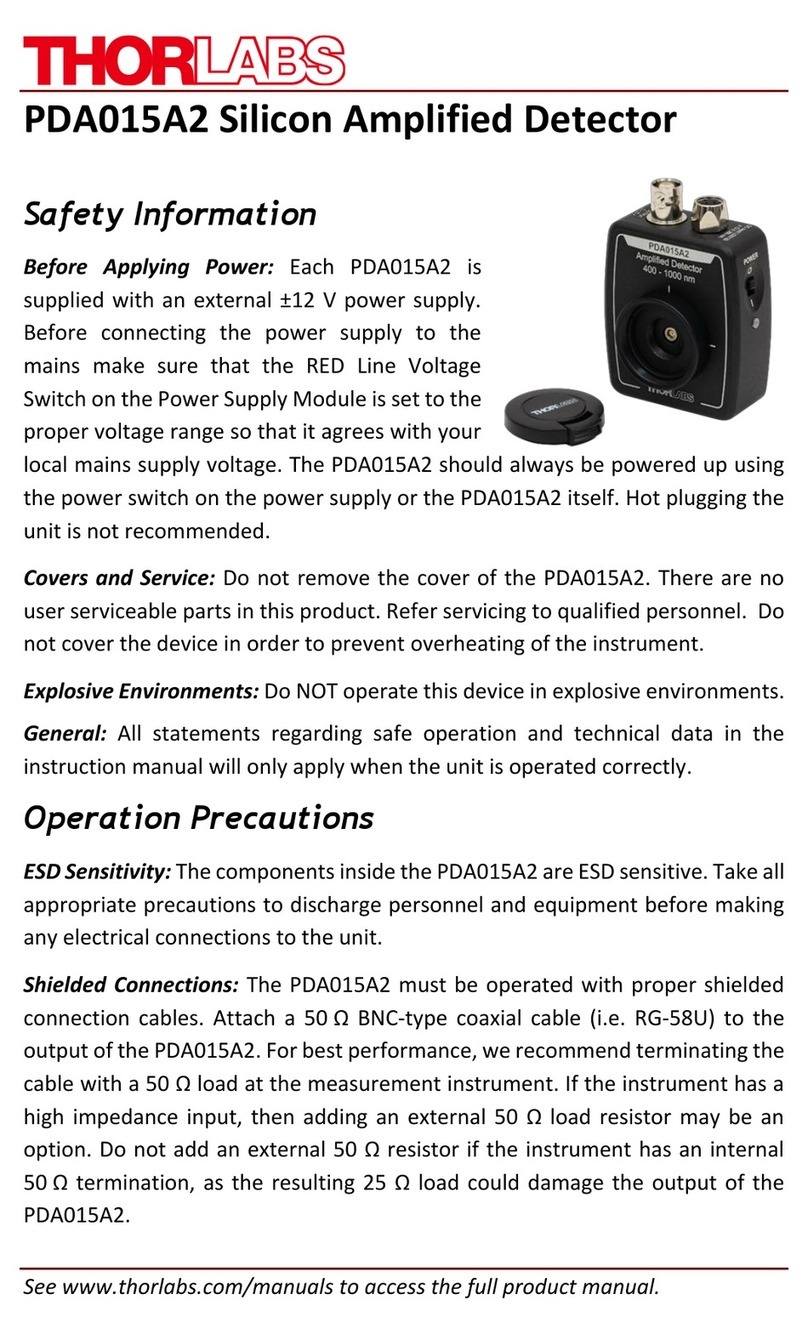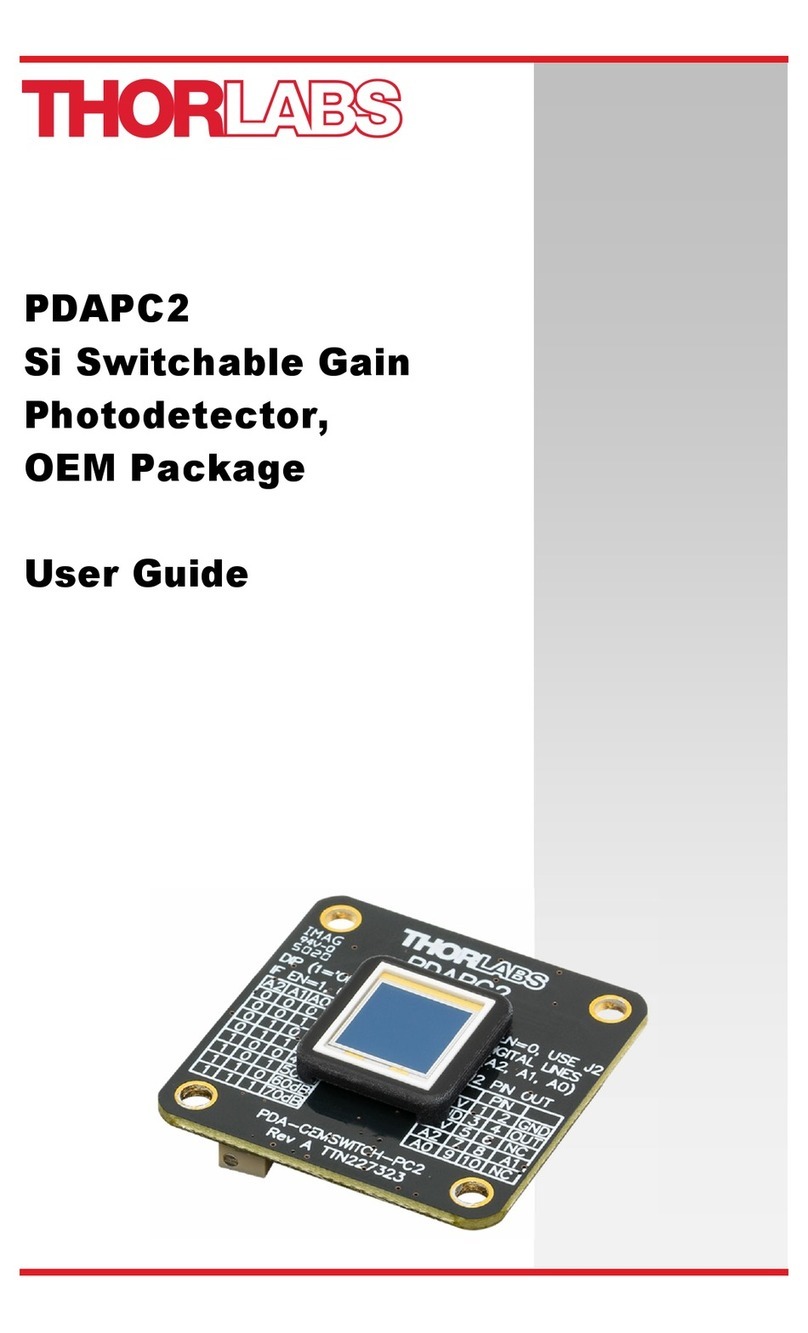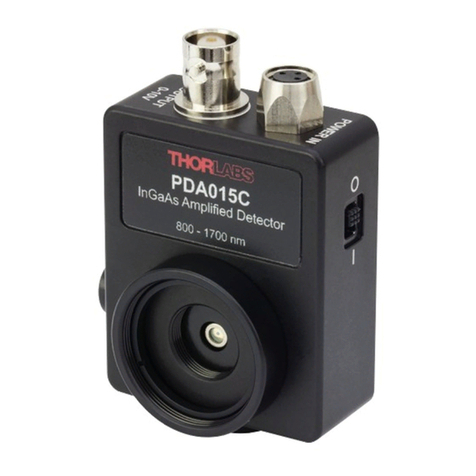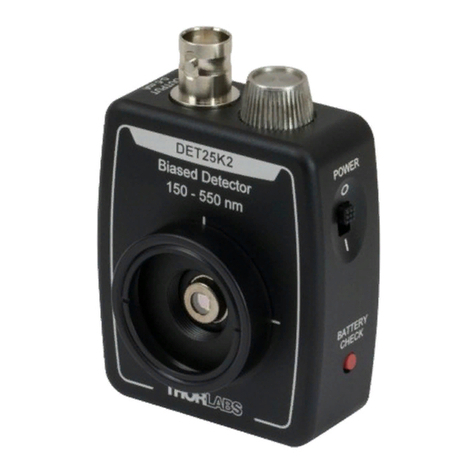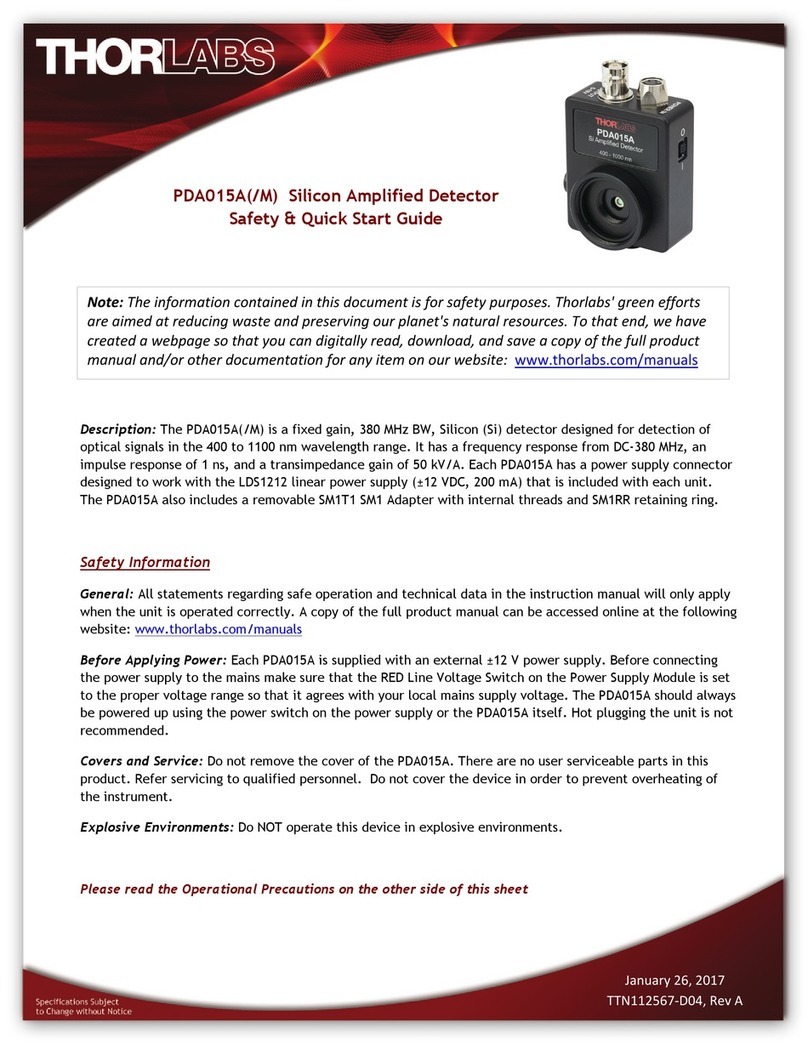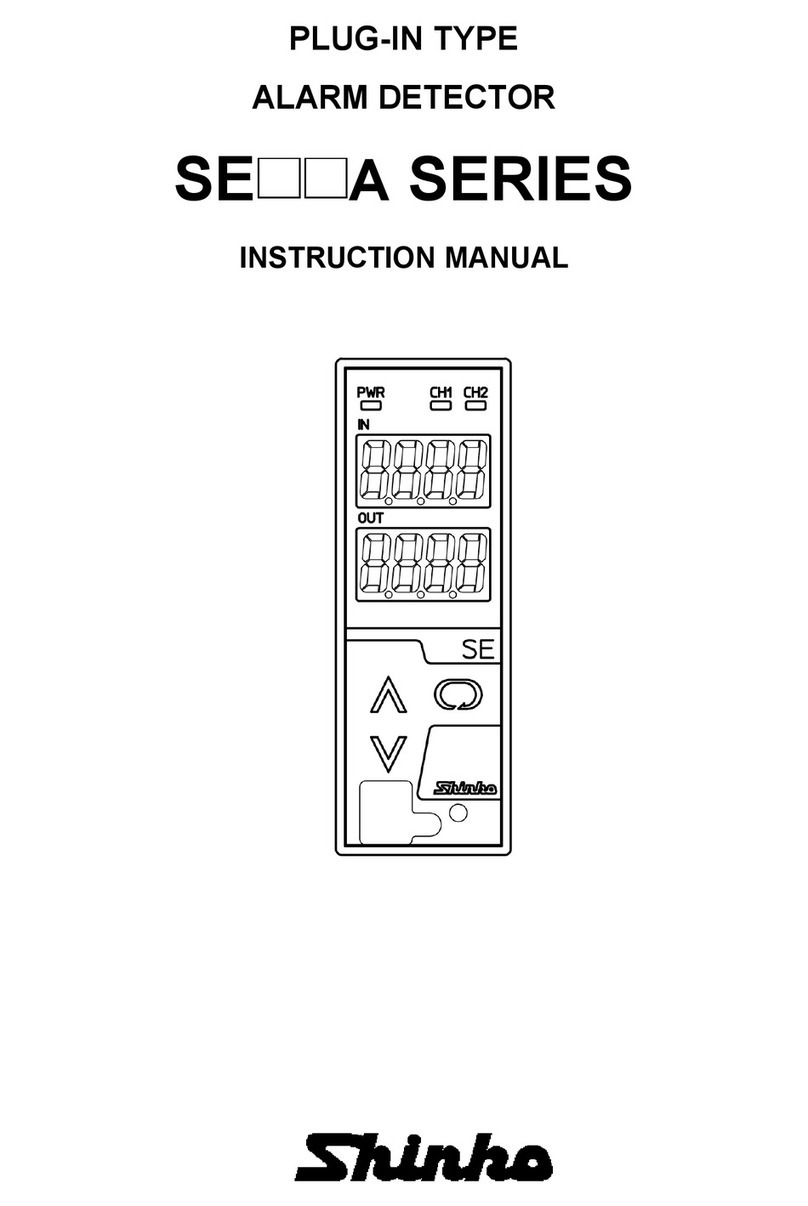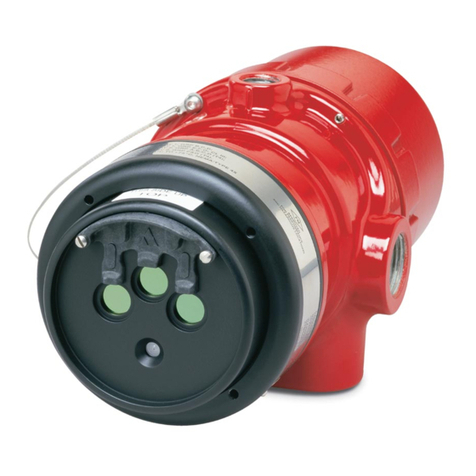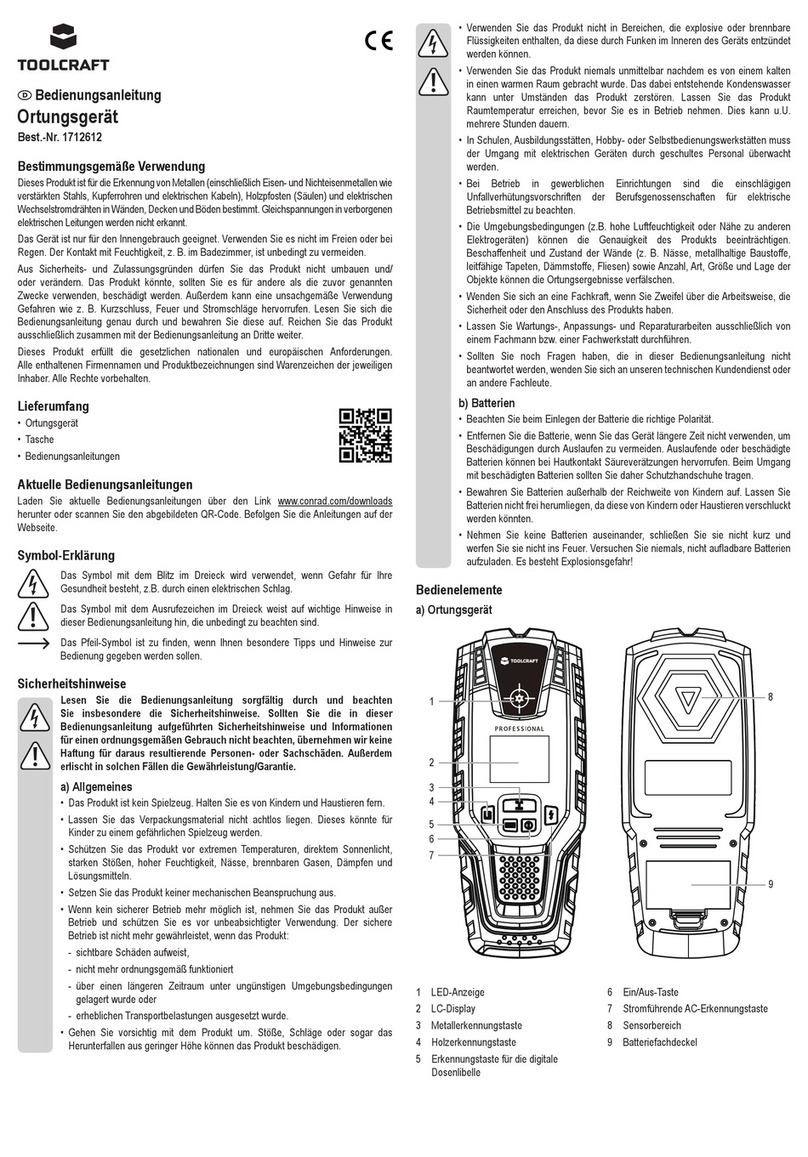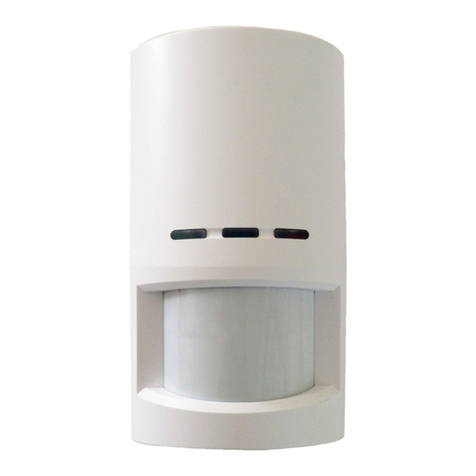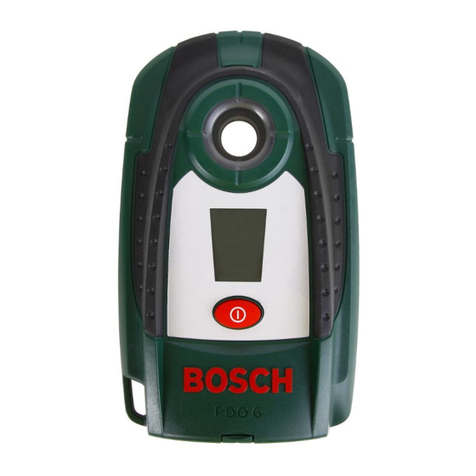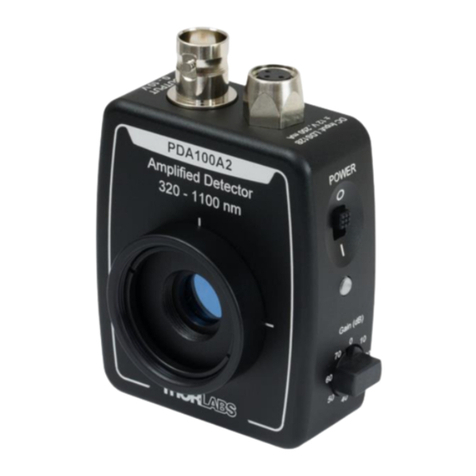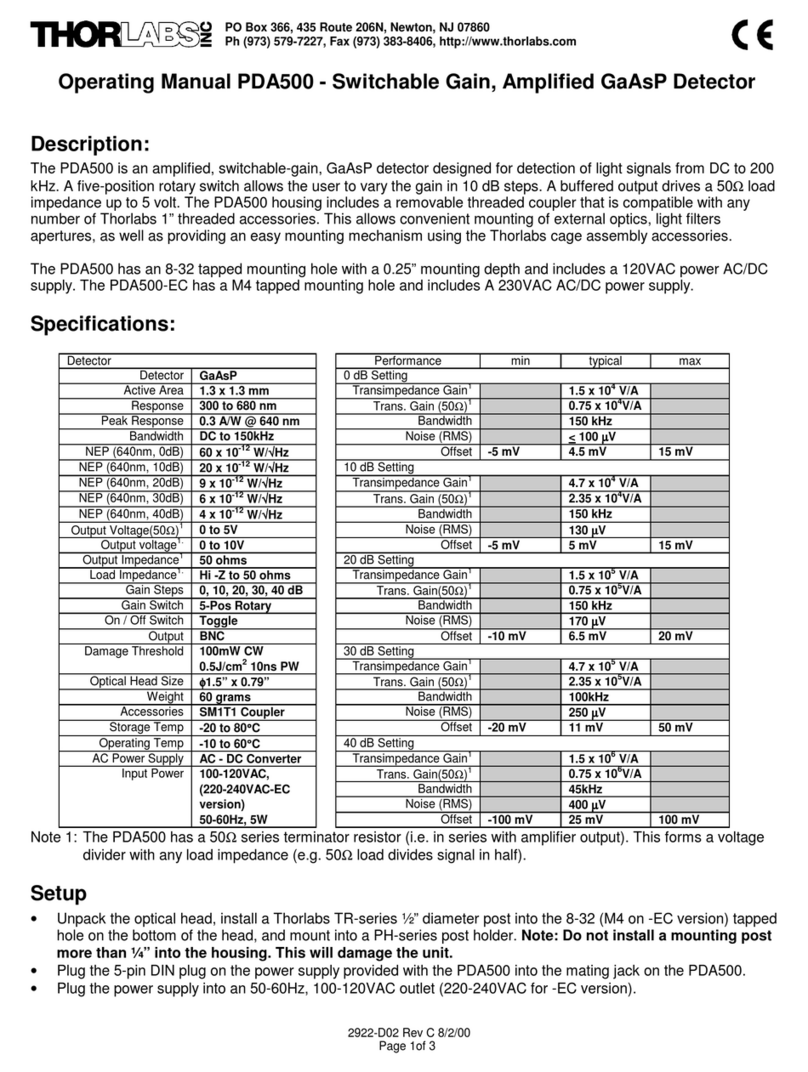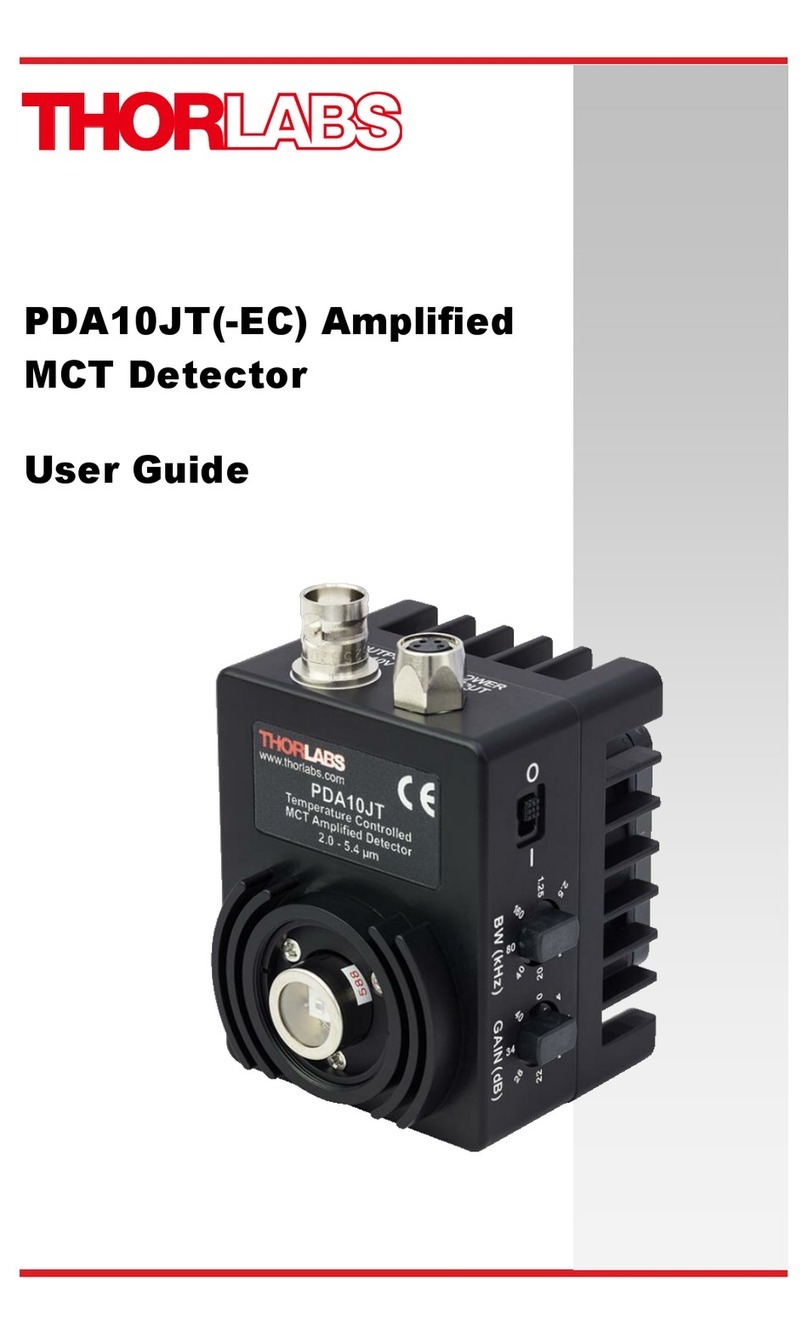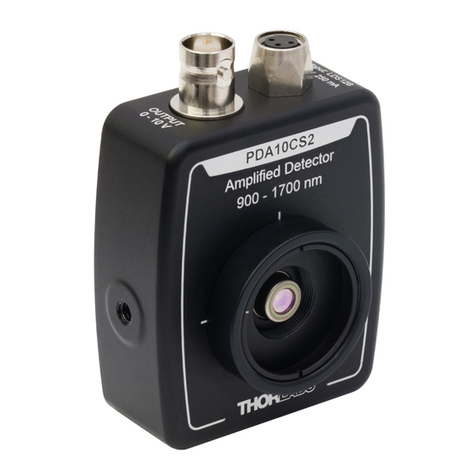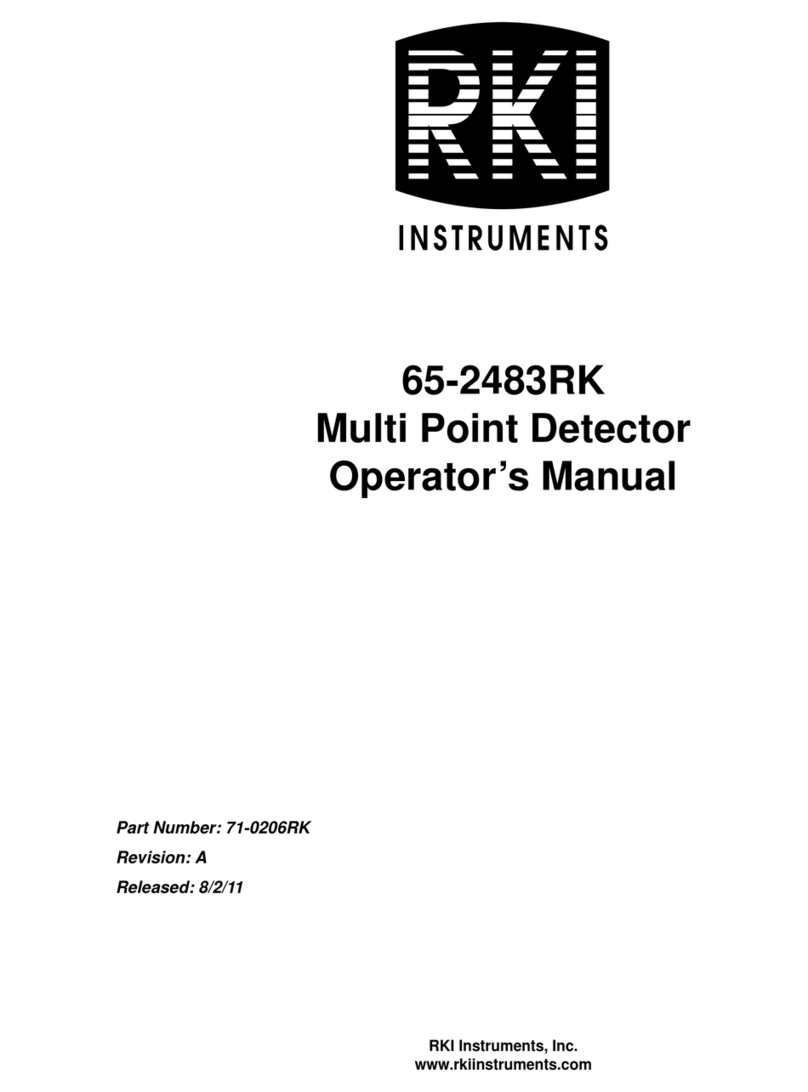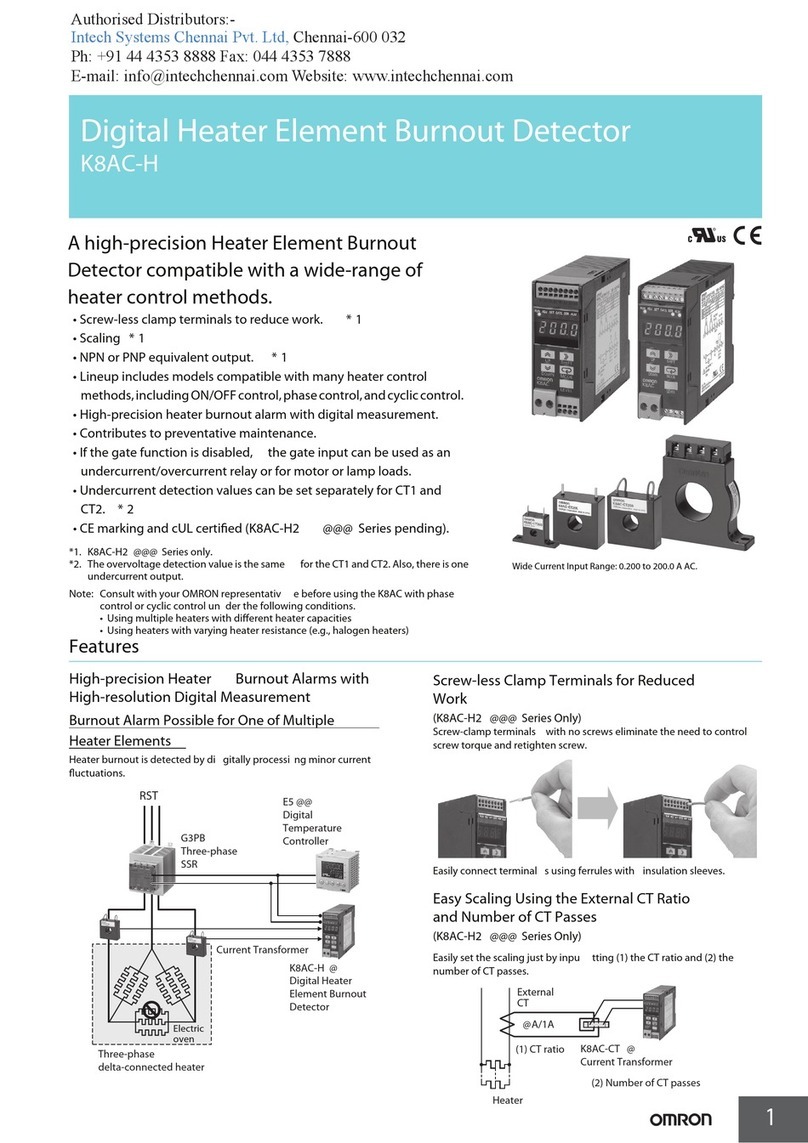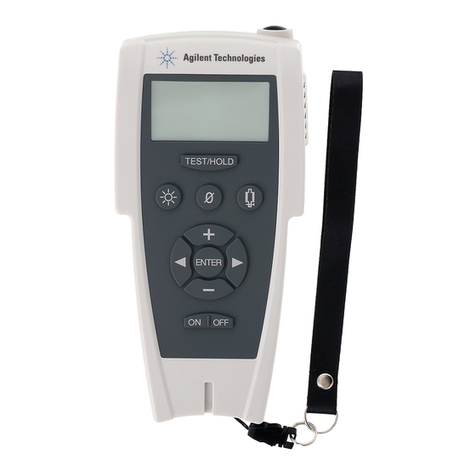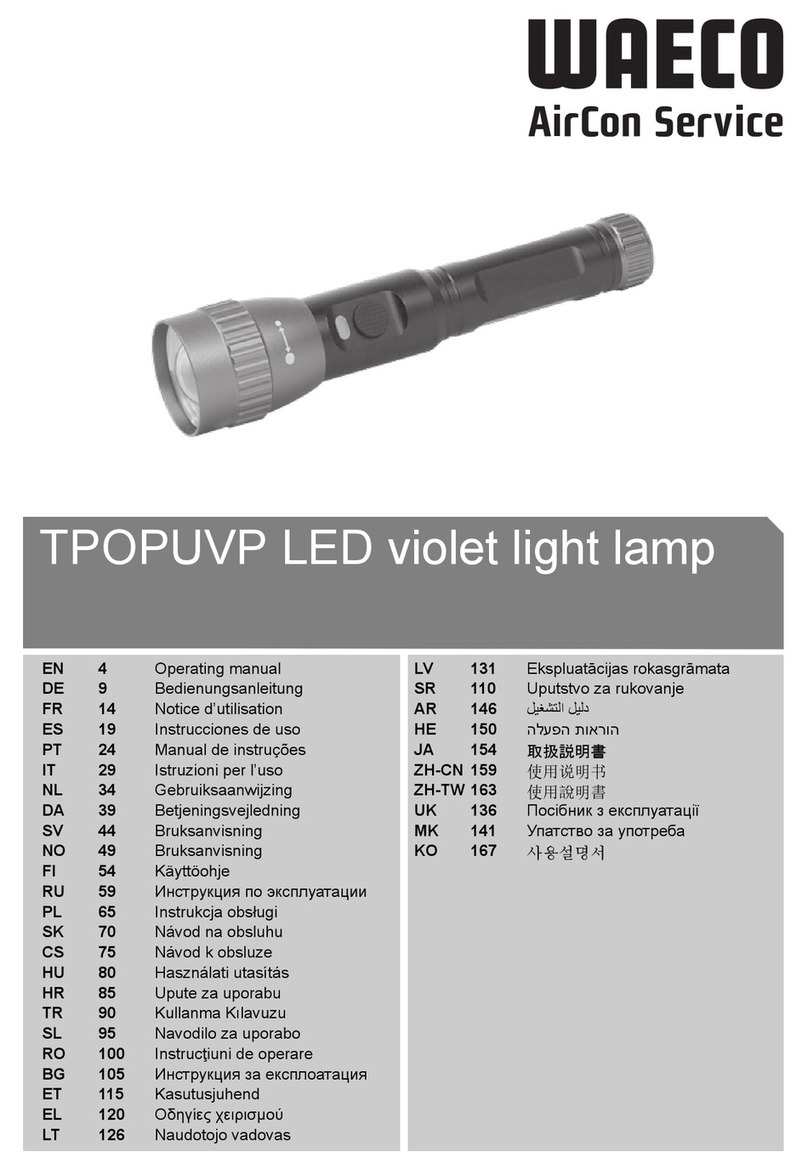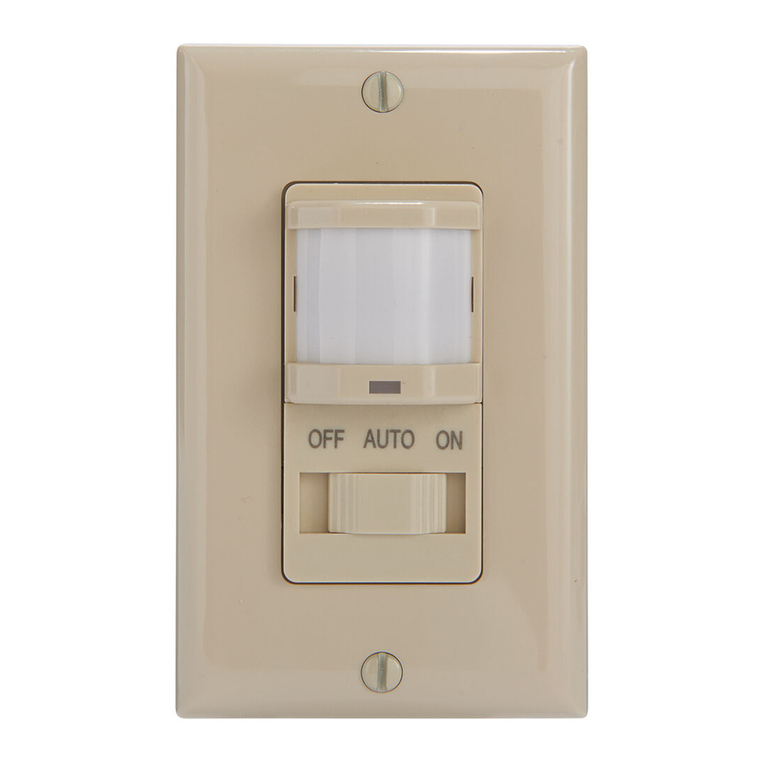
© 2020 Thorlabs6
APD450C
3.5.1 Optical Input
The APD450C uses a InGaAs Avalanche Photodiode with a detector active area diameter of
75 µm, expanded with a ball lens to detect light of Æ1.5 mm, operating from 1260 to 1620 nm.
The typical responsivity curves can be found in the appendix .
An open beam should be carefully aligned with the detector. External optics, filters or apertures
can be easily attached to the Avalanche Photodetectors because the housing is compatible
with any number of Thorlabs 1” and ½” threaded accessories.
For detectors with smaller active areas, as it is the case for APD450C, it is recommended to fo-
cus the optical signal out of the fiber onto the detector.
For this and other fiber coupled applications, fiber adapters like Thorlabs S120-xx series can be
mounted on the optical input. The fiber adapter will accommodate a multi-mode as well as
single-mode fiber. For detailed information on fiber coupling, please see the appendix .
Note
Coupling loss may occur due to small detector size, which will result in a reduced output sig-
nal. If angled connectors are used, the fiber adapter can be rotated from its original position
to check for an improved alignment. For this process use an optical input power below the
saturation power while observing OUTPUT voltage.
Saturation of the OUTPUT will occur at optical input power greater than CW Saturation Power
listed in specifications . If necessary, use external neutral density filters or attenuators to re-
duce the input light level. Please note that Avalanche Photodetectors are extremely sensitive to
unwanted stray light. Careful shielding of the Avalanche Photodetectors from any unwanted
light sources is essential. Common techniques to minimize the influence of stray light include
baffling or other opaque barriers like black cloths, beam tubes or using appropriate band pass
filters in front of the detector.
Note
For the APD450C the output signal must not exceed the Output Power at 1 dB Compression,
which is the point at which the amplified signal at 1 GHz is compressed by 1 dB. Above this val-
ue, the amplified signal will become non-linear and begin to saturate. The output voltage at this
saturation point can be calculated using the following formula:
where R is the load impedance (50 Ω), P0is defined as 1 mW, and L(dBm) is the power level in
dBm.
Attention
The optical damage threshold is 1 mW. Exceeding this value will permanently destroy the
Avalanche Photodetector!
3.5.2 Electrical Output
Thorlabs APD450C Avalanche Photodetectors deliver an output voltage. The ouput voltage Vout
is a function of the incident light power Popt,the detector's responsivity ÂM(l) at a given
wavelength and M-factor, and the transimpedance gain G:
10
13
9
